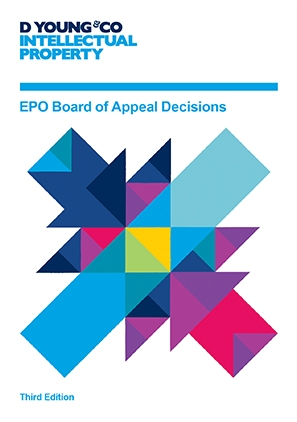Patent Commercialisation by Research Institutions
On the 24 November 2020 the European Patent Office (EPO) published the results of a new study titled "Valorisation of scientific results - Patent commercialisation scoreboard: European universities and public research organisations”. This study explores the way in which these institutions exploit their patent rights, and the challenges to doing so. Such exploitation can be an important source of revenue for these institutions, as well as providing an opportunity to further develop inventions for wider use, and as such maximising the potential of these rights is an important objective for many.
Patent commercialisation by European universities and public research organisations
The study found that patent activity by these institutions is significant, accounting for around 10% of new filings originating from EPO member states. Of the inventions for which patents have been filed by these institutions, 36% have been commercialised with another 42% being identified for planned exploitation. While this is considered a good level of commercialisation, this does mean that almost two-thirds of the inventions are not currently being exploited which represents a significant loss of potential revenue in addition to the costs of maintaining those patents.
SMEs (small- and medium-sized enterprises) and large companies make up equal shares of the commercialisation partners (at around 40% each) for these institutions; the other identified significant partner group being other research institutions. Perhaps unsurprisingly, most of the successful commercialisation was between partners in the same country with only 27% of partnerships crossing European borders. Cross-border partnerships were identified as being much more important for institutions located in southern and eastern European countries, at 39%, which could reflect limited opportunities for local commercialisation – this is supported by the statistics which identify that a failure to find a commercial partner is a factor in the non-exploitation of 66% of inventions in these countries.
Challenges to exploitation
The most common contributing factors towards failing to exploit an invention are continuing development (63%), failure to identify commercial opportunities (55%), and failure to identify commercial partners (38%). While the first of these issues is a timing issue, in that development has to reach a certain stage (such as having a working proof of concept) before an invention is ready for commercialisation, the latter two issues could be addressed by improved working practices such as consulting third parties who are experienced in commercialisation.
This is supported by the statistics in the study which identify personal networks (92%) and prior partners (71%) as the most common ways to find commercialisation partners. While in many cases these networks may be suitable to find a partner, these can be relatively small and therefore easily exhausted. The study discusses how moving outside of these networks could aid the commercialisation process significantly, particularly in the current climate in which networking has become somewhat more challenging. Patent databases (21%) are identified as a particularly under-utilised resource for seeking commercialisation partners; in view of this, seeking assistance from a third party who is well-versed in patents may be a particularly fruitful way to achieve effective commercialisation. To this end, the report notes that patent attorneys are meaningful channels for those seeking to exploit their inventions.
The preferred method of commercialisation amongst those successful exploitations is that of licensing, which accounts for 70% of the examples in the study. Research and development co-operation (14%), selling of the patent/application, (9%) and joint ventures (6%) make up the bulk of the other commercialisation options that are utilised. Licensing is also identified (83%) as the most desirable exploitation method by those planning on commercialisation of their invention, demonstrating that this is the most desirable option for most institutions. Of those inventions which have been successfully exploited, the main challenge was identified as being the cost and complexity of negotiations – ahead of the problems of finding suitable partners and generating interest in and protection of the invention. This highlights the value of expertise in handling licensing agreements to the commercialisation process.
Challenges in realised exploitation
Many institutions manage their commercialisation of patent rights through TTOs or TLOs (Technology Transfer/Licensing Offices), with three-quarters of the patents considered in the study being managed by offices embedded in the applicant institution. Most of these offices are small (fewer than ten people), with 52% only having one to three people dealing with patent commercialisation – this could be a direct consequence of the fact that only 31% of respondents considered their level of resourcing to be sufficient. It is noteworthy that at least 25% of inventions are not commercialised at least partly due to lack of resources, according to the study, so this lack of support for TTO/TLOs has a direct impact on the commercial success of inventions from these institutions.
Given the fact that a large number of inventions are not being well-commercialised at present, investing in TTO/TLOs may be money well spent for an institution as the lack of sufficient resources has a direct impact on the success of commercialisation attempts. New staff can bring new personal and business contacts that can be approached for potential partnership, which can be a rich source of commercialisation deals, while investment in additional third party support can aid the seeking of commercialisation deals outside of known contacts as well as manage any complex negotiations.
EPO study: "Valorisation of scientific results - Patent commercialisation scoreboard: European universities and public research organisations"
View the full EPO study (PDF download).
Read more

